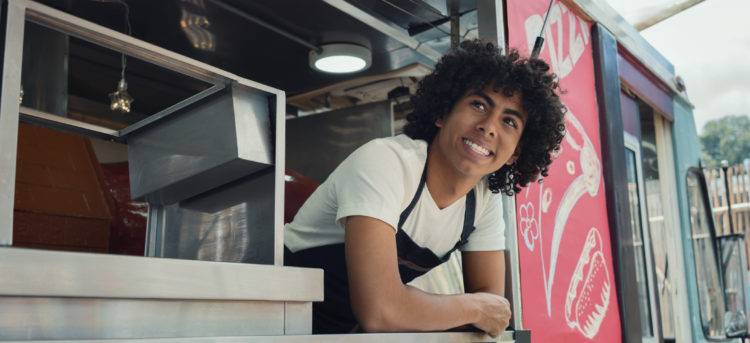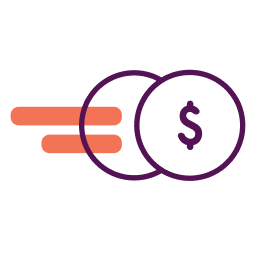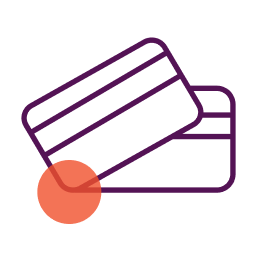If you’re looking to capitalize on a growing trend in the restaurant industry, consider starting a food truck business. The industry is valued at $1 billion currently and is predicted to grow 6.6% over the next five years.
Though running a food truck business can be more affordable than taking out a lease on a full-fledged restaurant, there is still a significant cost associated with this type of small business. Securing a traditional small business loan may be a challenge for food truck business owners.
Fortunately, there’s a solution: food truck owners looking to have working capital and smooth cash flow may qualify for food truck financing. A food truck loan can give you the money you need to buy a food truck or food trailer and inventory as well as invest in marketing to attract more customers.
How to Find the Right Financing for Your Food Truck
Startup costs for food trucks may be less than those for restaurants, but they still may be more than you’ve got in your bank account. As you’ll soon see, there are all types of loans you can use to finance your new business.
Which one is best? It depends on what you need and what you qualify for. Start by determining how much you need to borrow and what you’ll use it for. Then look at which lenders you qualify for loans with. This will help you narrow down the list.
Loan Options for Financing Your Food Truck
When it comes to food truck financing options, you have a few choices. Each may vary in terms of requirements for borrowers, the amount of money you can get, and the cost of the loan. It’s smart to compare different lending options; you might find that taking out a line of credit with an online lender ends up being a better deal than a traditional business loan or even crowdfunding.
Here are your best food truck financing options, for both long and short-term financing:
Equipment Financing
Best for: Fast funding and low interest rates.
If you’re looking for money for equipment purchases like a deep fryer or an oven, you may want to consider equipment financing. These loans use the food truck equipment you’re buying as collateral against the loan, which may help you get a lower rate than some of the other options on the list. Should you default, the lender might take that equipment to sell to cover the remaining balance.
Also, consider commercial vehicle loans if you’re looking to finance the food truck itself.
You can also consider leasing the food truck or equipment. This may give you lower monthly payments, but you won’t have the equipment as an asset you can sell at the end of the lease.
Here are a few lenders we recommend for equipment loans.
SBA Microloans
Best for: Smaller loan amounts.
The Small Business Administration (SBA) has a microloan program that provides loans up to $50,000 for borrowers to purchase inventory, supplies, or equipment, or to use as working capital loans. You don’t apply for this microloan directly through the SBA; instead, you will need to apply through a microloan intermediary.
The average microloan is $13,000. Most banks prefer not to lend such small amounts, so if you don’t need more than $50k in food truck financing, this might be a good fit.
Generally, you will be required to provide collateral as well as a personal guarantee for the SBA loan.
Check out SBA loans with your local bank or this lender:
Business Lines of Credit
Best for: Accessing working capital when you need it, rather than in a lump sum.
Another option for food truck funding is a line of credit. Unlike with a loan, which gives you a lump sum all at once that you’ll make payments on over the term of your loan, you can take out money against a line of credit whenever you need it and just pay that portion back.
Say you are approved for a $100,000 line of credit. Maybe right now, you need $5,000 to buy a new dishwasher. You borrow the money and start paying back that amount. Then in six months, you need an additional $17,000 for various expenses. Your lender would roll those two draws on your credit into one monthly payment.
Line of credit terms will vary, but typically you may be able to borrow between $10,000 and $1 million.
Here are lenders we’ve vetted that offer lines of credit:
Business Credit Cards
Best for: Expenses you can quickly pay off.
While not always the most affordable form of funding, business credit cards shouldn’t be overlooked.
If you have a last-minute emergency and don’t have the cash to cover it, having a credit card can alleviate the stress of not knowing how you’ll make the purchase. The key is being able to pay off your balance in full before those astronomical interest rates kick in.
Something to note: many business credit cards offer 0% APR as an introductory offer, and still others have rewards programs that allow you to earn points you can redeem toward cash back or travel expenses, so if you’re responsible with them, credit cards can be financially rewarding.
Crowdfunding Campaigns
Best for: Creating a buzz around your brand and getting interest-free funds.
Yet another option to consider is crowdfunding. Using websites like Kickstarter and GoFundMe, you can raise money from both professional investors and everyday folks who want to support your small business endeavor.
There are different types of crowdfunding: some require you to pay back the funding, while others only require you to give donors a reward as a thank you. You more than likely will have to pay a fee to the crowdfunding platform, as well as a fee for credit card or PayPal transactions.
How to Qualify for Food Truck Financing
Each lender considers slightly different criteria to qualify you for food truck financing, but there are some general guidelines. You should have been in business for at least six months (for online loans), and have $10,000 or more in monthly revenue (or annual revenues of $100,000). Some food truck startups may find it challenging to find a bank loan, since the requirements may be that you’re in business for two years or more.
You may be required to provide cash or collateral for a down payment along with your loan application, especially if your credit doesn’t meet the minimum requirement (we’ll cover those numbers next). You may also need a cosigner with good credit.
If you’re considering a food truck equipment loan, you’ll need similar qualifications, and may be asked for a down payment of 5-20% if you have good credit. Note that lenders may require a UCC filing, which could impact your ability to qualify for other financing, or could negatively impact your business credit report.
Some lenders, such as those offering SBA loans, may ask you to provide financial statements, tax returns, and a business plan. Others, such as through alternative lenders, may only ask you to fill out a short online application with just a few details about your business.
What Credit Score Do You Need to Buy a Food Truck?
Lenders may look at both your personal and business credit history to determine eligibility.
Though credit score requirements will vary from lender to lender, typically you’ll need a personal credit score between 550 and 640 as a minimum. You’ll find lower fees on food truck financing the higher your credit score is.
Also, the higher your credit score, the lower the down payment you may be required to put down on your loan.
Will Bad Credit Prevent You From Getting Food Truck Financing?
Not necessarily. Keep in mind: different financing options weigh criteria like your personal or business credit scores differently, so if your score isn’t high, look around until you find an option you qualify for with a decent rate.
If you’re looking at a commercial vehicle loan or equipment financing, you may be okay with a lower credit score because you’ll use the vehicle or equipment as collateral. This lowers the risk of the bank being left in the hole should you not be able to pay off the loan.
Still, know that if you don’t have good credit, the cost of food truck loans may be higher. If you are able to put off taking out a loan and can spend time building your credit, you’ll qualify for better terms and can save a little money in the long run.
Food Truck Financing Rates and Terms
The rates and terms a lender offers you depend on how well you qualify and how your credit looks, as well as the type of financing you choose.
For equipment loans, you may be able to borrow up to several million dollars and get repayment terms of 1-6 years. Annual percentage rates start around 3%.
SBA microloans offer up to $50,000, with rates from 0% (for those with stellar credit) to 13%, and have loan terms up to six years.
Crowdfunding typically has no cap on how much you can raise, though be aware that you will pay fees to the crowdfunding platform (up to 5%), as well as credit card or PayPal processing fees (3-5%). If you don’t raise the amount you set as your goal completely, you may not get any of the funds.
With food truck lines of credit, you may be able to borrow up to $250,000, with rates starting around 5%.
And with credit cards, look for introductory 0% APR; otherwise, those rates will soar to 13-20% on average. If you only pay the minimum monthly payment, your overall cost of financing with credit cards can get pretty high.
How to Use Financing to Grow a Successful Food Truck Business
Once you’ve got your new food truck loan, make the most of it. Have a plan for how you’ll use the funds to ensure you put them toward growing your business. You might use the loan to:
- Hire more staff
- Expand your menu
- Repair the truck
- Upgrade equipment
- Invest in marketing
And have a plan for paying back the loan, even if you won’t see an increase in profits for a few months.
Nav’s Verdict: Food Truck Financing
With so many options for food truck financing, the biggest decision for entrepreneurs is choosing the loan, line of credit, credit card, or crowdfunding platform that suits your needs best.
As you do your research, make sure to factor in all the expenses you’ll need to cover with your small business loans; not only will you need working capital (especially if your food truck business is new), but you’ll also need to cover things like permits and licenses to operate a mobile food truck. Many borrowers opt to pad their loans with a little extra in case of emergency. That way, you can cover unforeseen expenses like your griddle breaking during your busiest season.
This article was originally written on March 9, 2020 and updated on February 2, 2023.



Hi this article is really helpful for the beginners who are going to start their business, i contains complete information regarding financing and credit scores as well , worth reading it.
Great information!